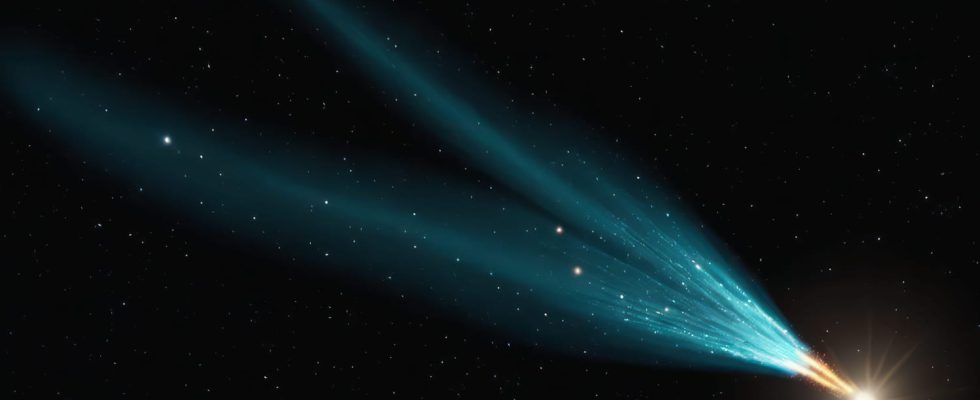This comet will only be visible for a few days. Its size fascinates scientists.
An object the size of three times Everest, or 34 kilometers in diameter, is discreetly passing overhead! Its nickname “The Devil’s Comet” calls for caution, and yet it presents no danger to the Earth, which it will cross 232 million kilometers away. It’s not next door but it will be clearly visible from Earth. This visit to space will only be an opportunity for budding astronomers to make beautiful observations and even a few photos.
71 years after its last passage, the star has been observable since the beginning of March 2024 using a pair of binoculars and it could well become visible to the naked eye in the coming weeks. Indeed, as the comet approaches the Sun, its brightness gradually increases until reaching its maximum on April 21. But it is not at this time that the comet will be visible from France, although very bright, because it will be too low on the horizon. With a little luck, it will be possible to admire it in the preceding weeks, starting this Thursday, March 14. It is on this date that the comet will cross the constellation of Pisces before joining that of Aries between March 26 and 27.
It is therefore now and until the end of March that you will be able to see it with the naked eye if a burst of activity occurs, increasing its brightness. To locate the comet on the celestial dome, you can use a smartphone application like SkyTonight, available on Google Play and the App Store.
The great return of the Devil’s Comet is an astronomical event that is already causing a lot of noise among space enthusiasts. Since last December, many astrophotographers have taken advantage of the passage of the comet to immortalize the moment and produce remarkable photos of it.
If its nickname intrigues you, know that the name “Devil’s Comet” simply comes from its shape shaped by the successive explosions which gave it two horns reminiscent of an imp’s head, according to the site Numerama. These explosions are linked to the nature of the comet composed of ice, dust and gas and its passage near our star.
The flares occur when the comet approaches the Sun which heats the ice and melts it. “The pressure builds up in the bowels of the small star. The gases end up infiltrating via cracks on the surface of the comet, which triggers spectacular icy eruptions,” explains the magazine Science&Future. A phenomenon which is not supernatural but which remains impressive.
